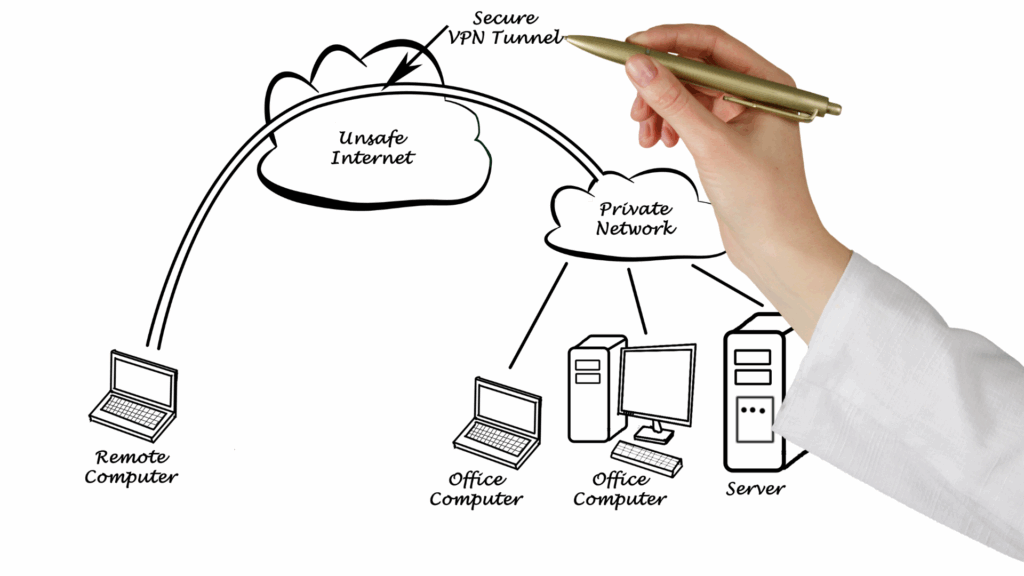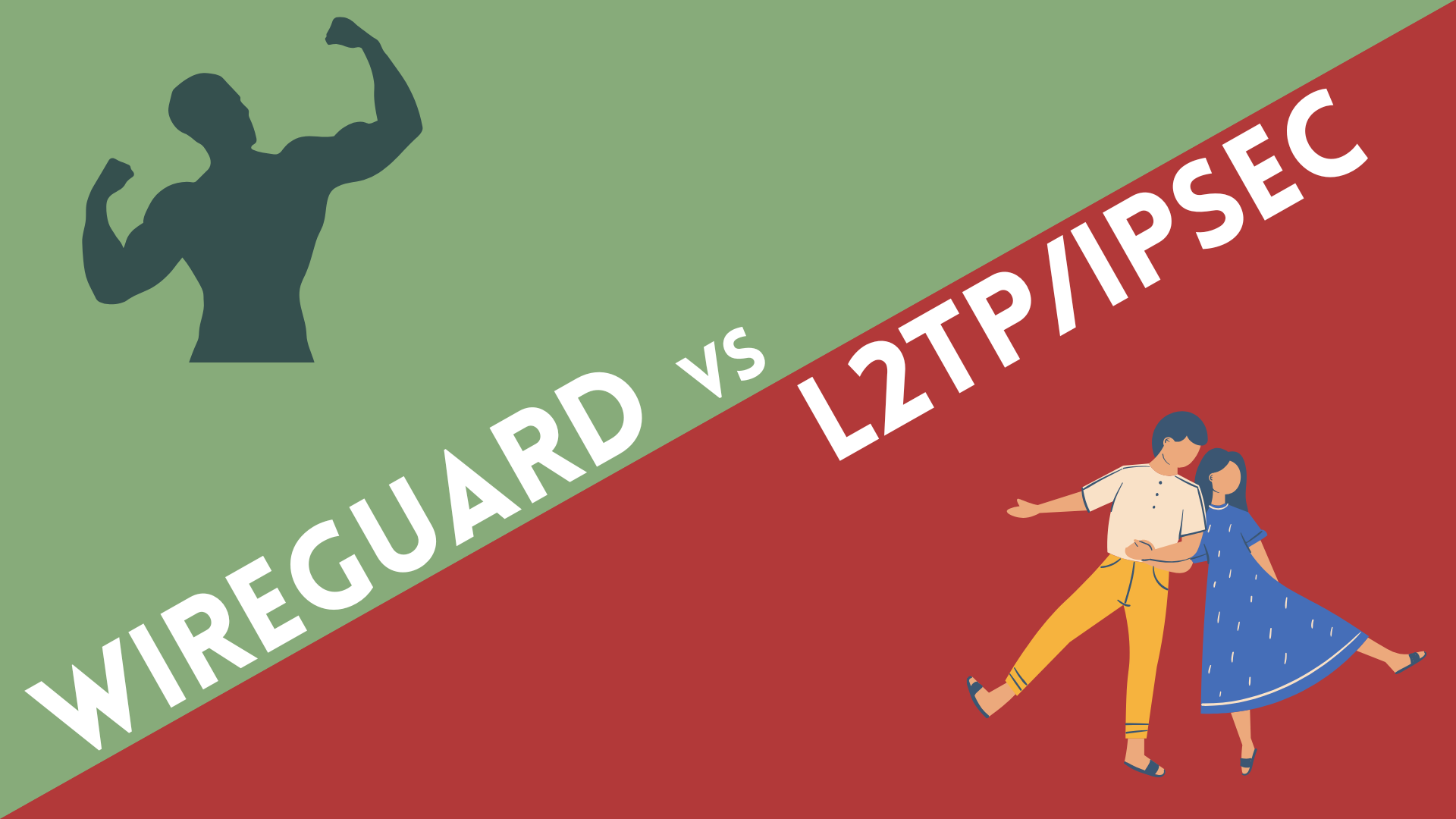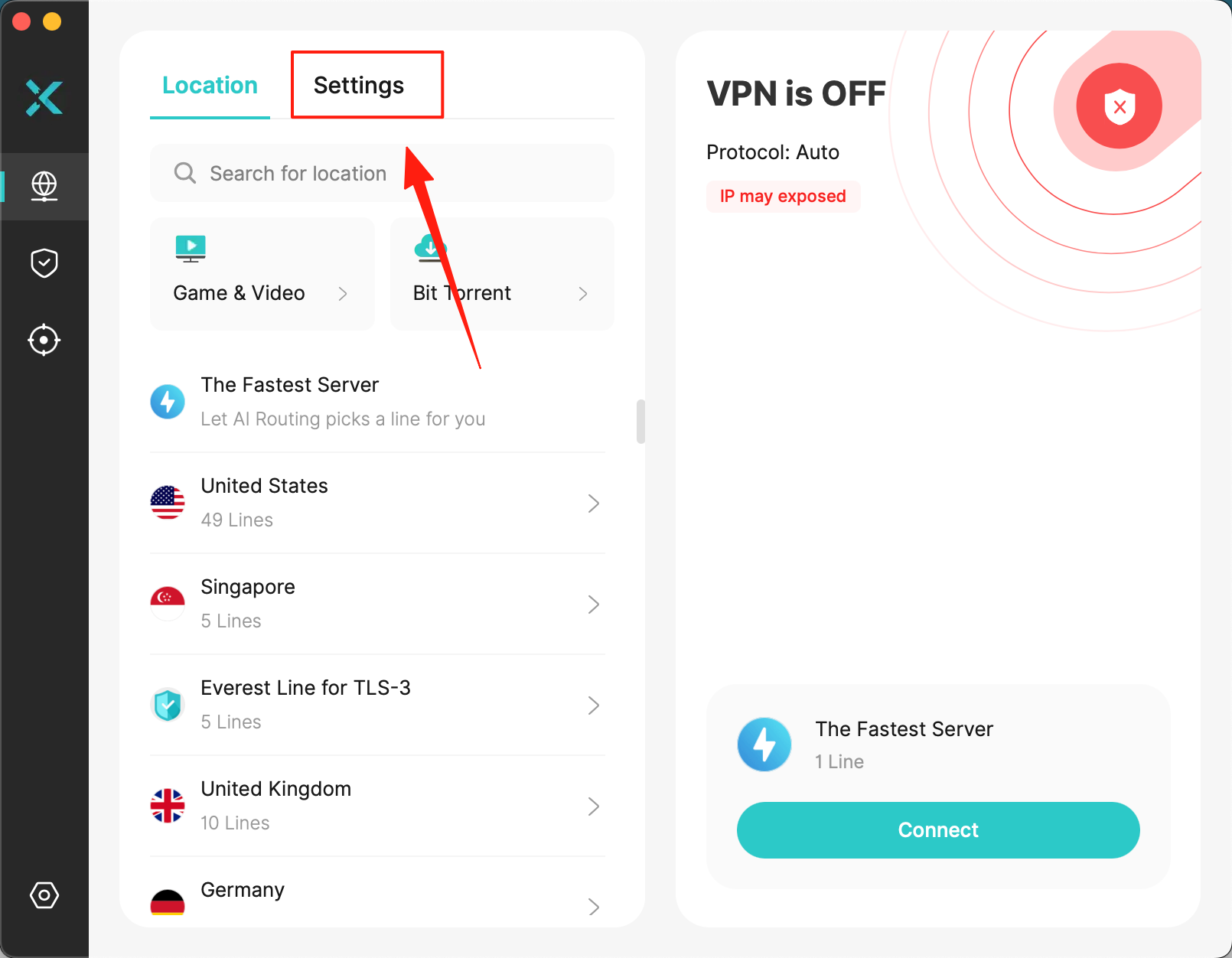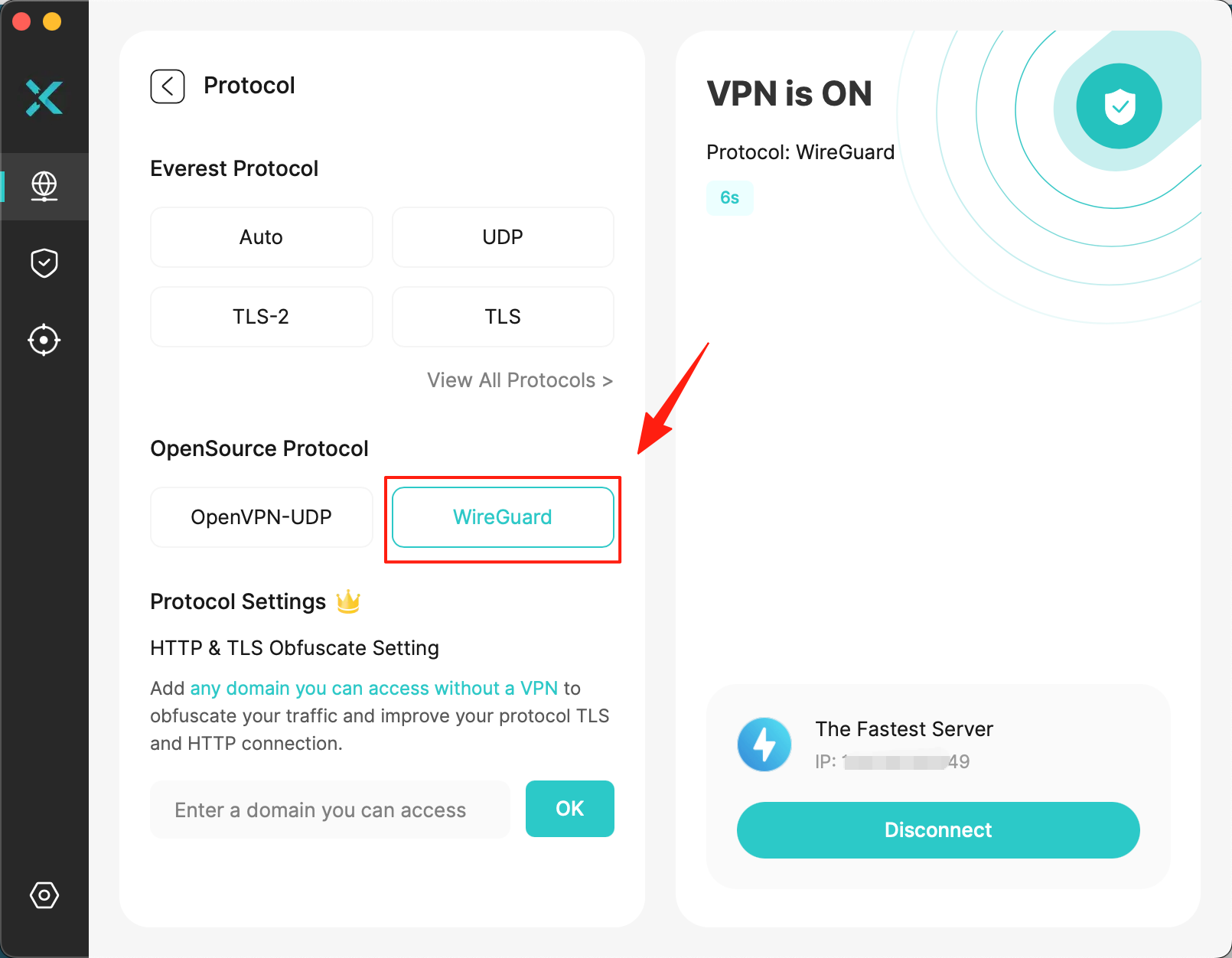
In the world of VPNs, protocols are like race car engines—some are fast, some are reliable, and some have been “retired” for years. While the old guard is still struggling on the track, WireGuard has emerged like a low-flying supercar, attracting countless tech enthusiasts with its minimal code, blazing speed, and robust encryption.
Let’s explore how WireGuard works and how it differs from other protocols, helping you understand why WireGuard has gained such rapid popularity.
Table of Contents
What is WireGuard?
WireGuard is a modern VPN protocol that is not only lightweight, fast, and efficient but has also gained a strong reputation in the tech community due to its open-source nature. Developed by Jason Donenfeld in 2015, its original purpose was simple: to create a faster, more secure, and easier-to-use protocol. It succeeded and did so quite impressively.
One of WireGuard’s most notable features is its remarkable “simplicity.” The entire protocol uses fewer than 4,000 lines of code, whereas OpenVPN and other commonly used protocols often exceed tens of thousands of lines of code. This ultra-lightweight design not only means high operational efficiency and fewer bugs but also greatly facilitates code auditing and maintenance, enhancing overall security.

In terms of encryption technology, WireGuard does not compromise but instead employs a comprehensive set of modern, robust cryptographic tools: Curve25519 for key exchange, ChaCha20 for encrypting transmitted data, Poly1305 for verifying message integrity, and BLAKE2s for efficient hashing. This combination of components excels in ensuring the confidentiality, authenticity, and tamper-resistance of communications.
Additionally, it is integrated into the Linux kernel and uses UDP for data transmission, resulting in shorter connection times and faster transmission speeds. While it is still somewhat “young” in terms of privacy control, WireGuard has undoubtedly found a satisfactory balance between speed, security, and simplicity.
If you’re also interested in OpenVPN, do not miss this one:

How Does WireGuard Work?
The way WireGuard works can be likened to creating an “invisible high-speed tunnel” between your device and the VPN server—one that others cannot see or touch, yet you can traverse it safely at very high speeds. While the process may sound complex, the underlying logic is straightforward.
Step 1. Key Pair Generation
First, everything starts with the key pair. When you set up WireGuard VPN, your device generates a pair of public and private keys, which are like a locked door (private key) and the key that can open it (public key).
This digital key pair is the core of WireGuard’s communication security, ensuring that only the intended communication partners can access the encrypted tunnel.
Step 2. Peer Exchange
Next, you and the VPN server exchange each other’s public keys, like a handshake to confirm identities. Once this peer exchange process is complete, both parties have officially established a trusted connection and are ready to begin secure data transmission.
Step 3. Establishing an Encrypted Tunnel
Using the exchanged keys, WireGuard creates a dedicated, encrypted tunnel. This tunnel is not only highly secure but also lightweight and efficient. From here on, every piece of data you send is like riding an invisible high-speed train, traversing the network without being snooped on or interrupted.
Step 4. Encrypted Data Transmission
When data is transmitted through the tunnel, WireGuard uses multiple advanced algorithms (such as ChaCha20, Curve25519, etc.) to encrypt the information. This means that anyone other than you and the target server will only see what looks like meaningless random gibberish.
Step 5. Flexible Peer Management
Finally, WireGuard excels at managing multiple peers. This means you can connect to multiple VPN servers simultaneously or even establish direct connections with other WireGuard users. This flexibility ensures that communication remains within an encrypted and secure environment.

Why WireGuard Is So Special: Key Features Explained
WireGuard has garnered so much attention primarily because it offers incredible speed and often outperforms many other VPN protocols in performance baselines. How does it achieve this? Here’s the answer:
Kernel-level Integration
Minimalist Architecture
Silent Roaming
Simple Yet Modern Encryption Scheme
Flexible Version Migration Mechanism
Community-Driven Rapid Optimization
Easy Installation and Wide Platform Support
Is WireGuard Perfect? Limitations and Considerations
Is WireGuard perfect? The answer, of course, is no. As a relatively young VPN protocol, it still has some areas that need improvement:
・Weak Support and Compatibility: While an increasing number of VPN services have integrated WireGuard, its server node deployment is still not as widespread as OpenVPN or IKEv2.
・Compatibility Challenges: Some older devices or less common operating systems may have compatibility issues with WireGuard.
・ Simplicity Comes with Limitations: WireGuard’s minimalist architecture offers speed and security but also limits its performance in certain advanced features. For example, it does not offer built-in support for dynamic IP rotation or obfuscation, which may be insufficient for scenarios requiring higher levels of anonymity.
・Poor Unlocking Ability: WireGuard traffic has relatively distinct characteristics, making it easier for platforms with strict regulation or content restrictions to detect and block. This also makes it somewhat challenging to unlock global content.
💡Note:
In response to these challenges, X-VPN supports WireGuard as a standalone option while also offering its proprietary Everest protocol. Built on military-grade AES-256 encryption, it incorporates robust obfuscation mechanisms to effectively counter VPN traffic identification and blocking. This “stealth mode” becomes particularly crucial in regions with restricted content access or high network censorship.
Click the button below to try X-VPN, enjoying lightning-fast connection speeds with the WireGuard protocol and unlocking global network freedom effortlessly with Everest’s support!

Get the WireGuard VPN with a click.
Stay Safe with X-VPN Now.
WireGuard vs Other VPN Protocols: In-Depth Comparisons
To truly understand WireGuard’s positioning, we can place it within the broader VPN protocol framework and examine its significant advantages and limitations compared to several classic protocols that are still widely used today, such as OpenVPN, IPSec, and L2TP/IPSec.
WireGuard vs. OpenVPN: Modern Minimalism vs. Established Veteran

・OpenVPN is one of the most widely used VPN protocols today, adopted by countless businesses and individual users due to its high security, stability, and customizability. However, its large codebase and complex configuration methods make it less efficient in terms of speed, performance, and mobile-friendliness.
・WireGuard represents the next generation of VPN protocols, focusing on a minimalist structure and modern encryption to achieve a balance between speed, security, and deployment efficiency.
WireGuard | OpenVPN | |
|---|---|---|
Code Volume | ~4,000 lines | Over 15,000 lines |
Encryption | Modern encryption suites | Customizable, like AES, RSA… |
Speed Performance | Extremely fast, low ping | Average performance, especially on mobile networks |
Compatibility | New protocol, still being widely integrated | Stable and mature, with good compatibility |
🔥Summary: If you prioritize speed and simplicity, WireGuard is usually better; however, in complex network environments or when precise control of encryption parameters is required, OpenVPN remains a reliable option.
WireGuard vs. IPSec: Lightweight Newcomer vs. Enterprise Standard

・IPSec is a traditional protocol that is integrated by default into many enterprise routers and systems. It offers high security and is suitable for internal network connections and encrypted communication scenarios. However, it is complex to configure, inefficient, and poorly suited to mobile scenarios.
・WireGuard achieves the same core objectives in a more modern and structurally simpler way, but with more efficient performance and a friendlier user experience.
WireGuard | IPSec | |
|---|---|---|
Initial Connection Speed | Fast | Relatively slow |
Configuration Difficulty | Simple, just text configuration files | Complex, requiring multiple settings |
Mobile Compatibility | Supports roaming, suitable for mobile networks | Poor support for NAT/roaming |
Target Audience | Individual users/mobile devices | Typically operated by enterprise administrators |
🔥Summary: WireGuard is more suitable for modern personal and lightweight enterprise scenarios; IPSec remains the foundation of large enterprise network architectures, but has higher learning and maintenance barriers.
WireGuard vs. L2TP/IPSec: Integrated Simplicity vs. Traditional Overlay Solution

・L2TP/IPSec is a solution composed of two protocols—L2TP is responsible for establishing tunnels, while IPSec provides encryption. It has been supported by default in many operating systems, but its setup is complex, and it cannot provide the same performance as WireGuard.
・WireGuard excels at providing a simpler, faster VPN experience. Its efficient design and modern encryption methods enhance speed and responsiveness, avoiding the complexity and performance overhead of the layered L2TP/IPSec approach.
WireGuard | L2TP/IPSec | |
|---|---|---|
Protocol Structure | Integrated design, lightweight and efficient | Dual protocol stack, complex and inefficient |
Startup Speed | Fast connection | Slow startup, easily blocked by firewalls |
Mobile Compatibility | Suitable for mobile networks | Connection prone to interruption, slow reconnection |
Configuration Method | File configuration, few steps | Multi-layer configuration, cumbersome |
🔥Summary: WireGuard is the “new answer” tailored for modern networks, while L2TP/IPSec is more like the default option from the past decade—suitable for basic learning but not recommended for long-term use.
How to Set Up and Use WireGuard?
If you’re interested in WireGuard and wish to use it as your daily VPN protocol, you can either manually configure it yourself or choose a provider that supports WireGuard.
Method 1. Manually Deploy a WireGuard Network
⭐️Suitable for: Tech enthusiasts, self-hosted server users
You can manually set up WireGuard nodes and establish encrypted tunnels between multiple devices using official tools and configuration files. This method offers high flexibility but requires some network knowledge and server operation experience.
Method 2. Select a VPN Provider Supporting WireGuard
⭐️Suitable for: Users seeking immediate setup and a hassle-free experience
Compared to the technical demands of manual configuration, choosing a VPN service that supports WireGuard is the simplest way to get started. This allows you to leverage the provider’s existing infrastructure and server network.
Several prominent VPN providers offer WireGuard as a protocol option within their applications. Below, we’ll use X-VPN as an example to demonstrate the specific setup process.
Step 1. Download and install the free VPN on your device. X-VPN offers a 100% free and unlimited version that allows you to connect to remote free servers using the WireGuard protocol without login.
Step 2. Run the app, move to the home page, and find Settings.

Step 3. Navigate to Protocol> OpenSource Protocol, choose WireGuard, and connect to any server you want.

Conclusion
So what is WireGuard? It is a game-changing VPN protocol that provides an excellent combination of security, speed, and ease of use. Just click the button below to use X-VPN for free!
Of course, we also remind you to check the legality of using VPNs in your region beforehand. While VPNs are available in most areas, being cautious can always help you avoid many risks.
FAQs
How secure is WireGuard compared to other protocols?
WireGuard employs a combination of modern cryptographic algorithms such as ChaCha20 and Curve25519 to deliver exceptional security performance. However, it should be noted that the protocol currently lacks several advanced security features. For instance, it does not support obfuscation mechanisms or multi-hop connection capabilities, falling slightly short of mature protocols like OpenVPN in these areas.
Are there any limitations or drawbacks to using WireGuard?
Yes, WireGuard does have certain limitations and drawbacks. It remains in a relatively early stage of development, and some advanced features that could better protect user privacy may not yet be implemented. However, WireGuard continues to evolve, and its simplicity and outstanding performance make it an extremely attractive choice.
Is WireGuard compatible with my device?
Yes, WireGuard is compatible with most devices. Support varies for routers, streaming boxes, gaming consoles, and other network devices. It is designed to be cross-platform and widely compatible. The official WireGuard app is available for all modern phones, tablets, and computers.




